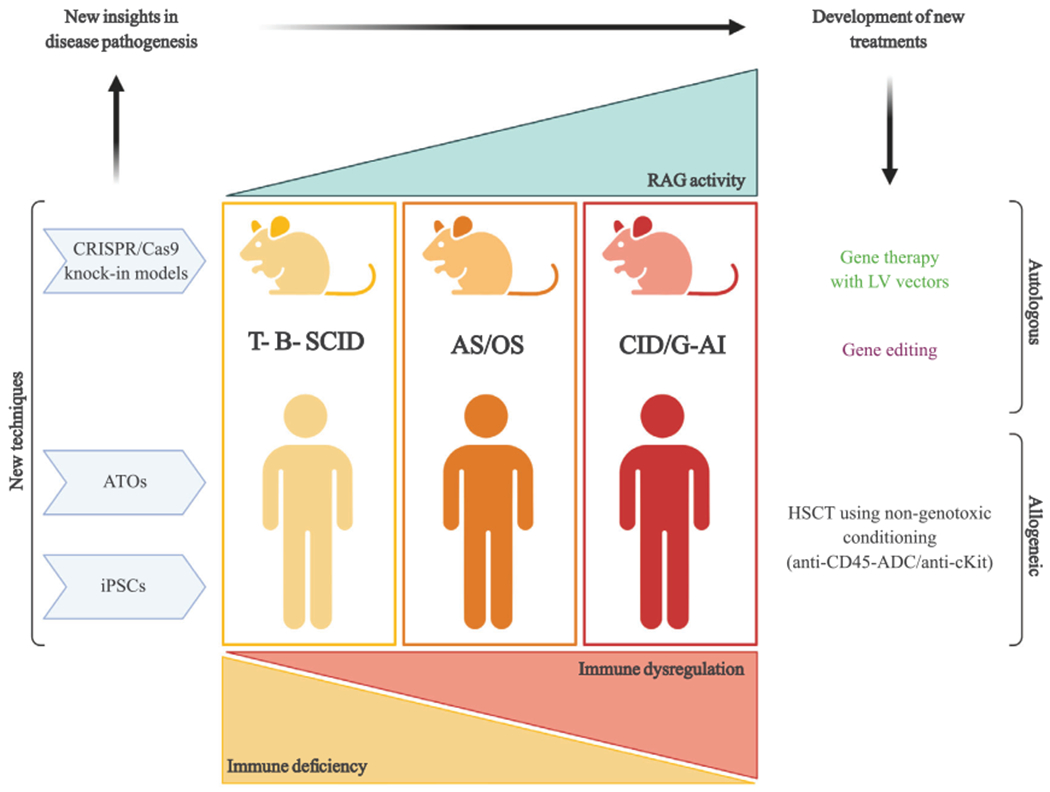Figure 3.

Novel investigational techniques offer new insights into pathophysiology of RAG deficiency and open novel therapeutic perspectives. Depicted here are some of the new experimental techniques that have provided novel insights into RAG deficiencies. In particular, CRISPR/Cas9 technique has been used to generate novel knockin mouse models carrying RAG mutations found in patients, while artificial thymic organoids (ATOs) and induced pluripotent stem cells (iPSCs) have allowed in vitro modeling of faulty T-cell development using cells isolated from RAG-deficient patients. These novel tools have also made possible the development and testing of novel prospective therapeutic approaches such as lentiviral vector-mediated gene therapy, gene editing, and use of nongenotoxic conditioning regimens for hematopoietic stem cell transplantation (HSCT).
